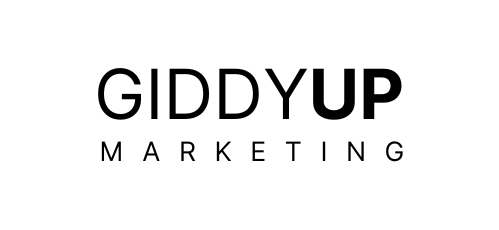Why Guerrilla Marketing Still Wins: How Scrappy Execution Beats Big Budgets Every Time
Here's a question every marketing leader should ask themselves: "What if we could deliver the same results with half the budget?"
Most executives assume that bigger marketing budgets automatically translate to better results. But after working with companies ranging from fast-growing startups to established enterprises, I've learned something different. The most successful marketing initiatives aren't the ones with the biggest budgets. They're the ones with the most creative execution.
While competitors are throwing money at agencies and traditional tactics, guerrilla marketers are building authentic connections, generating quality leads, and driving real business growth through resourceful thinking and scrappy execution.
What Guerrilla Marketing Really Means in B2B
Guerrilla marketing isn't about stunts or gimmicks. In the B2B world, it's about maximizing impact through creative problem-solving, unconventional resource allocation, and authentic relationship building.
Modern guerrilla marketing combines strategic thinking with hands-on execution. It's about finding the path that competitors won't take because it requires more creativity than capital. The companies that master this approach don't just save money. They build stronger customer relationships, create more memorable experiences, and often achieve better results than their big-budget competitors.
Four Core Guerrilla Marketing Principles
1. Network Over Budget
When FluentStream needed PR to improve their brand validation and credibility, they had done zero PR to date. Determined to find the right agency, I turned to my network for advice. Multiple contacts said the same thing: "You don't need an expensive agency. You need a hungry PR person."
That insight led me to universities to find talent. I reached out to the professor of Public Relations at the local university in Denver to ask if they knew any recently graduated students that were looking for work. Well, I did one better than that. I ended up hiring a former professor (Michelle Baum, co-founder and COO of The Nova Method) who became the foundation of a PR machine that generated 2100% growth over two years.
The lesson? Soliciting your network for insights can often lead to better solutions. People want to help, especially when you approach them authentically rather than through traditional vendor relationships.
2. Get Creative and Think Outside the Box
Sometimes the biggest impact comes from completely reimagining how things are typically done. Before I entered startup land, I worked for Apple and Motorola and we put on large event series like WWDC (Apple's Worldwide Developer Conference) and MOTODEV Summits with very large budgets.
When I was at Realm, since acquired by MongoDB, my boss proposed doing a world-class event series on a bootstrapped budget.
The creative solution? A 10-month series of events across 40 cities and five continents, all executed with just a $110K budget. Even though I was running this event series, I only went to 2 out of 40 of the events and those were local San Jose and San Francisco events.
How did we do this? We partnered with local meetup groups, so they would host the event. We would provide food, drinks and swag and send ONE person (whoever was geographically closest). Essentially we built an "event in a box" so anyone on the team could execute locally.
I mean compare this to the MOTODEV Summit days when there was probably 30 of us flying first-class to China. Don't get me wrong...that was awesome! But for a startup, this was not even an option.
The key was being willing to really get creative to really challenge the norm. We used WWDC and the MOTODEV Summits as a foundation for what branding a world-class event should look like. By focusing on authentic local engagement and creative resource sharing, we leveraged local partnerships and generated 4K leads from 2K attendees.
3. Personal Touch at Scale
When 5ironCyber's Executive VP Jason Bradley approached me about their sales team's challenges with high-value prospects and suggested a more personal approach.
I developed a systematic account-based marketing program built around deep personal research and thoughtful, handwritten touchpoints. The approach included local food gifts, business books, and even sporting event tickets, all chosen based on individual prospect research.
The result? Multiple qualified leads with some prospects responding after just 2 touchpoints. By giving the sales team a playbook on how to build their top 20 list, how to research each individual and how to build a custom outreach kit for each prospect, we cut through the noise that drowns out most B2B communications.
4. Low Cost Tools for Big Results
WireX Systems needed a complete marketing function but had startup-level resources. Instead of choosing between comprehensive strategy and budget constraints, we built a marketing toolkit that delivered both.
Working directly with the CEO, I developed everything from brand guidelines to automated LinkedIn outreach, prospect email campaigns and a complete website redesign. The comprehensive approach saved the company tens of thousands of dollars compared to typical marketing agency quotes while creating systems that required minimal ongoing oversight.
How did I build this without a big budget? I utilized a lot of free or low cost tools out there, including Canva, ChatGPT, Claude, Dripify and Mailchimp. For the website project, I created webpage mockups in Google Slides to visually show what I was trying to accomplish without hiring and directing a graphic designer to create web ready assets built in Adobe Illustrator and Photoshop. Instead I used the slide deck to convey the visual style and overall hierarchy and then worked directly with their wordpress developer to implement.
Is it perfect no? But is it a huge improvement to the website they had? Absolutely.
Not every company has the budget to spend hundreds of thousands of dollars on a website redesign, but that isn't their only option.
Why Guerrilla Marketing Works Better Today
The modern B2B landscape actually favors guerrilla approaches over traditional big-budget tactics. Here's why:
Decision-makers value efficiency. CEOs and department heads appreciate marketing partners who save time and money while delivering results. They're more likely to trust and refer someone who demonstrates resourcefulness.
Technology enables small-team impact. The right combination of tools and processes allows small teams to execute at scales that previously required large departments.
Personal relationships drive B2B sales. In a world of automated outreach and generic content, personal attention creates immediate competitive advantage.
Getting Started with Guerrilla Marketing
The transition to guerrilla marketing starts with changing how you evaluate opportunities. Instead of asking "What's our budget for this?" start asking "What's the most creative way to achieve this outcome?"
Look for resources you already have but aren't fully utilizing. Your network, your existing tools, your team's non-marketing skills, and your industry knowledge all represent untapped potential.
Focus on building systems that multiply effort rather than just adding more effort. The best guerrilla marketing creates assets that continue working long after the initial investment.
Most importantly, embrace the constraint. Limited budgets force creative thinking that often leads to better solutions than unlimited resources would have produced.
The companies that master guerrilla marketing don't just survive tight budgets. They use resourceful execution as a competitive advantage that scales with them as they grow.
Tracy Pullman is an AI-Powered Marketing Executive and B2B SaaS Growth Specialist who helps companies achieve exceptional results through creative, resourceful marketing execution. Download case studies and examples at giddyup-marketing.com.

 By
By
.png)

